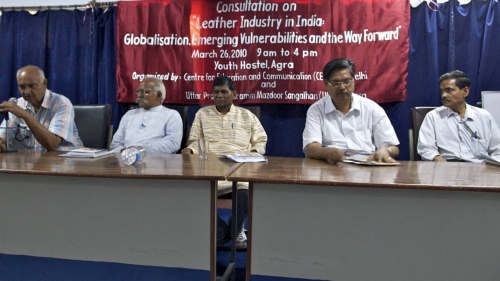Garment & Leather Workers

Giant retailers and brands during this time were changing their strategy from pr
Clothing industry is one of the most globalised Industries in the world today. Asia leads world’s garment production. India is the third largest exporter of clothing from Asia (after China and Hong Kong) accounting for 1284.7 million pcs. valued at US$ 4769.4 million in 2002-03. Relatively a new sector, it evolved with great speed with the large-scale relocation in garment trade in the 70s and by mid 80s had a formidable workforce. The textile industry employed roughly around 35 million people, making it the second largest employer in the country after agriculture. The economic significance of the textile sector is further established by the fact that it contributed about 14% of the industrial production in the country and about 27% of its export earnings.
India has 6 major cities that manufacture garments; Tirupur, Delhi, Chennai, Bangalore, Kolkatta and Mumbai. The sector employs 4.5 million garment workers. In each city the worker groups are different and so is the production style. It could range from raw materials, to domestic market to an ever growing export market. Delhi and Mumbai has more of contract labour. The workers are mostly migrant workers- In Bangalore the workers are from Andhra Pradesh. A big problem they face is of language. The workers are accommodated in a building provided by the factory and is a closed community that cannot be approached.
There are three levels of organization across the country where at the family level there are the SHGs, at the community level the members have been visiting the factory and the houses of the workers.At the factory level, the unions and NGOs have been organizing workers to a union. In other areas, the workers are issued identity at the panchayat level. Organising workers is done at the source level and the welfare society at the district level.
However, the most common problem seen is that there is a lack of awareness. There is less time for lunch break and more stress is laid on the production. Since the target is uni-focal, no heed is given to the noise and atmospheric pollution, the poor seating arrangements, and the long hours that the workers stand and work without a break. There is no social security in Tirupur and Delhi though there is some good coverage at Bangalore
